|
|
|
|
Cropland & Pasture (21)
|
|
|
|
Row Crops (211), Hay/Permenant Pasture (212), Grains (213)
Cropland and Pasture classes are most easily identified using leaf-on mid to late summer imagery such as the NAIP. Most fields in this class have a geometric shape. Accurate identification of cropland and pasture is extremely difficult using the VMP orthos because they were acquired in early spring prior to the emergence of agricultural vegetation.
|
|
Row Crops (211)
|
|
|
Keys exist for corn (2111), by far the most common row crop in Vermont, and Soybeans (2114), which have a presence is some areas, particularly Addison County. Other root crops are extremely rare or non-existent in Vermont. Because Alfalfa (2115) is considered to be a hay crop in Vermont, it's keys are presented in the Hay/Permenant Pasture class. In most cases row crops such as corn are in some type of rotation with hay fields. |
|
|
Corn (2111)
|
|
|
| In the NAIP healthy corn appears a uniform dark green color, with a smooth to medium texture, and possibly a linear pattern. Late plantings or soil conditions can greatly alter the appearance of corn causing it to be "spotty." In this case the color will be more of a medium green with noticeable light colored patches of exposed soil, rough texture, and linear or variable pattern. Corn fields may be identifiable on the VMP orthos if the soil was recently tilled. In this case the fields will appear considerable brighter than surrounding fields. |
|
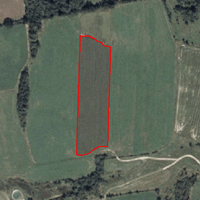 |
|
 |
|
|
|
|
|
|
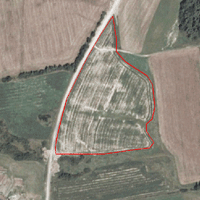 |
 |
|
Spotty corn due to late plating
|
|
|
Soybeans (2111)
|
|
|
|
| Healthy soybeans appear very similar to corn in NAIP with a dark green color, smooth texture, and no discernable pattern. In fields where the soybean crop is stressed there will be lighter green areas and possibly lightly colored areas of exposed soil, the texture will appear rougher, and there may be some evidence of a linear pattern. Soybean fields cannot be reliable mapped on the VMP orthos. |
|
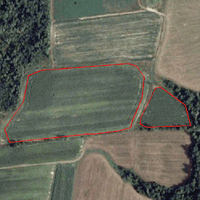 |
|
 |
|
|
|
|
|
|
Hay/Permenant Pasture (212)
|
|
|
Keys exist for Hay (2121), Pasture (2122), and Idle Agricultural Land (2124). Hay is an extremely prevalent agricultural land cover in the state. Hay fields are often in rotational pattern with row crops, typically corn. Idle agricultural land may also be assigned to Herbaceous/Brush (33). |
|
Hay (2121)
|
|
|
| Hay fields vary widely in Vermont due to environmental conditions and type of vegetation. In most cases hay fields can be distinguished from row crops in that they are a lighter green. When compared with pasture hay fields tend to have a deeper green color and more uniform and smoother texture. During the first year hay fields are often seeded with peas and oats, which changes to a combination of alfalfa and/or grass. Hay is typically harvested several times over the summer resulting in a light brown/tan color due to the exposed soil. The VMP orthos are a poor source for differentiating hay fields from other agricultural LULC classes. |
|
 |
|
|
 |
|
|
|
|
Peas/oats, will transition to alfalfa/grass in the following year
|
|
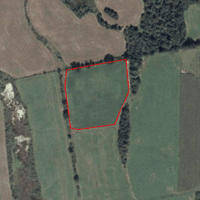 |
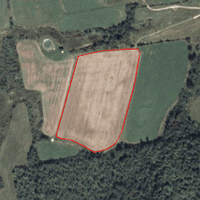 |
|
Alfalfa/Timothy grass mix
|
Alfalfa/Timothy grass mix recently harvested
|
|
Pasture (2123)
|
|
|
| In the NAIP pasture fields will have a green to light brown color with a spotty texture and no discernable pattern. Although similar in appearance to hay fields the spotty brown appearance of pasture fields is often the key indicator. The VMP orthos are a poor source for differentiating pasture fields from other agricultural LULC classes. |
|
 |
|
|
 |
|
|
|
|
|
|
Idle Agricultural Land (2124)
|
|
|
| In the NAIP idle agricultural fields will appear very similar to pasture. The key difference is that due to the height of the vegetation the field will have more texture. The VMP orthos are a poor source for identifying idle agricultural land |
|
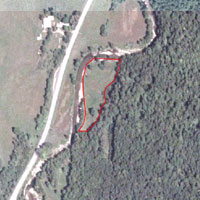 |
|
 |
|
|
Idle Agricultural Land (4 years)
|
Idle Agricultural Land (1 year)
|
|
Grains (213)
|
|
|
Grains are quite rare in Vermont and difficult to distinguished from more common agricultural land cover types, particularly hay fields that have recently been harvested. Examples of wheat (2131) and barley (2134) are presented. The VMP orthos are a poor source for differentiating grain from other agricultural LULC classes. |
|
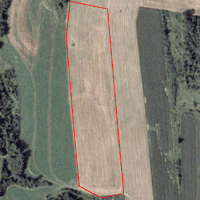 |
|
 |
|
|
|
|
|
|
|
|
|
|
|
|
|
|
|
|
|
|
|
|
















